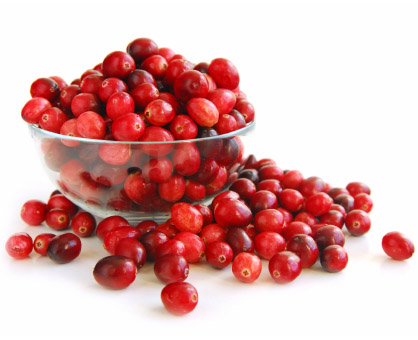Cranberry’s Got Cred
No Thanksgiving table would be complete without at least one dish containing Vaccinium macrocarpon, more commonly known as the cranberry. When Native Americans introduced this brilliant red fruit to the Pilgrims, it was not only prized as a culinary ingredient, cranberries were also used both as a natural dye and medicinally to prevent indigestion, heal arrow wounds and treat other maladies.
Packed with nutrients, the cranberry is a jewel-like fruit that’s an incredible source of antioxidants and high in fiber and vitamins A and C. From breakfast bread to classic cranberry relish, you’ll benefit in more ways than one with this sweet and tangy berry.
Growing
Cranberries grow on low-running vines in sandy bogs and marshes. Because cranberries float, bogs appear flooded when the fruit is ready for harvesting. Ranging in color from light to dark ruby red, fresh cranberries require little advance preparation. Simply rinse and remove any stems.
Selecting & Storing
Choose cranberries that are firm and plump, while avoiding discolored, shriveled or sticky ones. Store fresh cranberries in a tightly sealed bag for up to two months or frozen in a bag for up to one year. To use frozen berries, do not thaw; just rinse with cold water and drain.
Eating
This familiar holiday fruit may make an appearance in multiple holiday dishes. Cranberries are incredibly versatile. They add a tart burst to quick breads, including muffins, pancakes and waffles. You can also use them to create a homemade cranberry sauce or stir some into homemade applesauce, beverages, oatmeal or parfaits. For dessert, toss them into cobblers or crisps or add them to salads as a sweet topping or appetizers like crostini topped with goat cheese and cranberries. The cranberry possibilities are endless!








